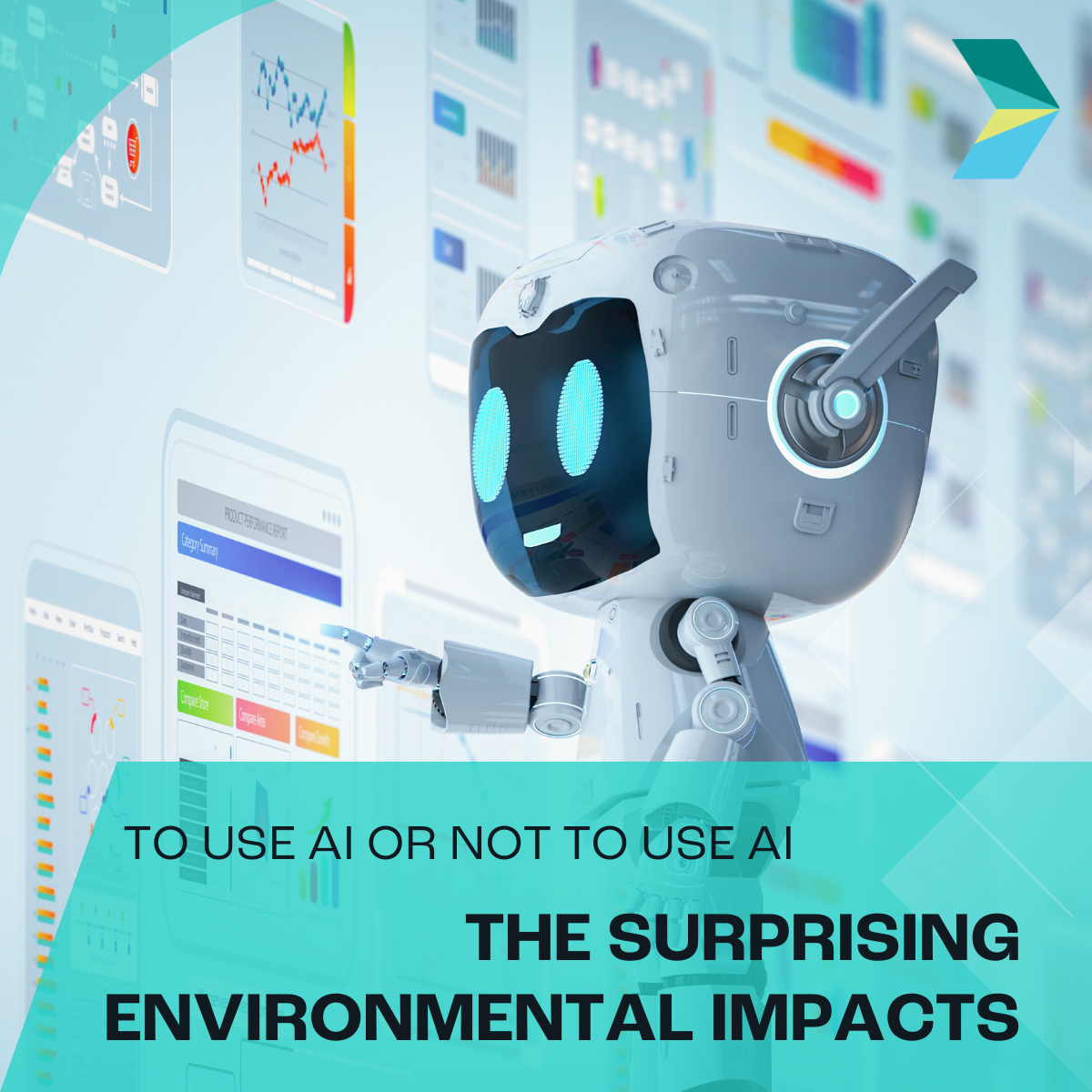The surprising environmental impacts of using AI
When we think about artificial intelligence or AI, we usually think about all the benefits and ways in which it helps us. What gets less attention is the environmental impact of AI.
Environmental Consultant Gemma van Hemert explores some of the key environmental impacts associated with the use of AI.
Energy required for AI responses
ChatGPT requires 2.9 watts/hour of energy each time it is asked to do something, and with approximately 300 million users worldwide, that’s a lot of energy! A recent study found ChatGPT consumes enough power to charge more than 3 million electric cars, or nearly 50 million iPhones, for an entire year, from (International Energy Agency, 2024).
Energy required to train AI
Not only is energy required for each response generated by AI, there are also immense energy requirements to train generative AI models. For example, training GPT-3 has been estimated to require just shy of 1,300 megawatt hours of electricity. Meanwhile its more advanced counterpart, GPT-4, has been estimated to required 50 times more. (World Economic Forum, 2024). That is equivalent to powering about 9,500 Australian households for a year (Australian Energy Regulator 2023).
Energy required to house AI
Data centres are required to house the resources needed to run, support and train AI, and it is estimate that AI data centres account for up to 1.5% of the world’s electricity usage (International Energy Agency, 2023). In 2022, data centres consumed about 460 terawatt-hours globally, and with the boom of AI, cryptocurrency and data centres, it is estimated that this could reach more than 1,000 terra-watt hours in just 2026 (International Energy Agency, 2024), less than a year away!
Resources required for AI
The resources required to build and maintain data centres go far beyond just your concrete, cables and electronics. The volume of water required for traditional cooling systems in data centres is immense. A small 1 megawatt data centre requires about 25.5 million litres of water per year (Mytton, 2021) and the boom in global AI has been projected to require 4.2-6.6 billion cubic metres of water in 2027 (Li et al. 2025).
What are the implications for environmental consultants?
While we can and should use AI for completing laborious tasks such as desktop and literature reviews, we must remain conscious and ethical in our practices and remember that outputs and sources still need to be verified by a knowledgeable professional.
We also encourage our peers to think twice before asking AI for help with minor requests that can just as easily be completed effectively by a well-trained practitioner, to reduce our environmental impact.
Many of us also have a role to play in ensuring the energy sector is diversified and capable of powering the continued AI boom. This means continuing to innovate in how we manage the environmental impacts of energy projects that we are assessing.
For expert support in environmental assessment and approvals, reach out to us.

